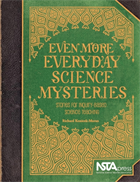By Mary Bigelow
Posted on 2010-02-02
I’m looking for suggestions for formative assessments. Do you have some unique ideas to assess students quickly and adjust instruction accordingly?
—Karen, Arizona
 Formative assessments are ongoing, classroom level assessments critical to discovering what students are learning during the instructional process so we can move on (if students have learned a topic) or revisit our instruction to correct any misconceptions or to fill in any gaps. These quick and focused check-ups can provide just-in-time information on what students know or can do prior to end-of-unit tests or yearly exams.
Formative assessments are ongoing, classroom level assessments critical to discovering what students are learning during the instructional process so we can move on (if students have learned a topic) or revisit our instruction to correct any misconceptions or to fill in any gaps. These quick and focused check-ups can provide just-in-time information on what students know or can do prior to end-of-unit tests or yearly exams.
I’m not sure I have any “unique” ideas and you may already have many activities that could be part of a formative assessment process. These can be varied so they become an integral and enjoyable part of the learning process, not just special events. Formative assessments are usually not graded to provide a safe way for students to ask questions and reflect honestly on their learning—and not be penalized for a mistake, a misconception, a question, or an incomplete understanding during the learning process. Here are some formative assessments I like:
- Frequent quick thumbs-up/down/sideways responses from students can give instant feedback during a discussion or activity. If you’re concerned this is a self-assessment, you can ask a thumbs-up student to explain briefly or use some probing questions with a thumbs-down student to find out the source of the confusion (which other students probably share, too).
- Some teachers use small white boards or half sheets of paper on which students write and display short responses and hold them up. A brief scan of the room lets you see the responses and know all students are involved. This is a low-tech version of the “clicker” systems that allow students to respond electronically for an instant check of student understanding. The advantages of the electronic system are that students may be more forthcoming is they feel their answer isn’t being broadcast to the class and you have a record of the student responses to analyze.
- In a variation of the think-pair-share strategy, students do a quick write in their notebook/journal, share their writing with a partner, and then summarize to the class. If the summaries start to sound the same after the first several ones, you can ask other teams if they have questions or anything new to add. As you listen to their summaries, you can get a feel for what students are learning, and the other students get to hear the information in different words or from a different perspective.
- Students could work on a graphic organizer or summary as a warm-up or a ticket-out-the-door activity to give you a glimpse into their thinking.
- When students are working in pairs or teams, you can walk around with a checklist of communications skills and lab behaviors or a notepad to record your observations to discuss with the class. Spend a little time with each group to observe their work, ask a few questions, or provide any clarification. This could also be a time to do a quick scan of some science notebooks.
Regardless of what activity you use for formative assessment, it’s important for students to get feedback beyond whether the response was correct or incorrect. Giving specific suggestions for improvement, asking probing or follow-up questions, encouraging the students to correct their mistakes, and helping students to self-assess their work authentically are part of the formative assessment process.
So what does a teacher do if the students didn’t get it? It may be tempting to assume they weren’t paying attention (which may be true) or to repeat the information in a louder or slower voice. But you need to have a few extra tricks up your sleeve to adjust your instruction: alternative explanations, extra practice activities (once any misunderstandings are cleared up), other visuals, additional examples and non-examples of a concept, graphic organizers, think-alouds, or alternative readings. Of course, if all the students get it, it’s okay to move on to the next part of the lesson. (Although I found sometimes their understanding was fragile and some additional assessment and review was necessary later.)
I would recommend the book Science Formative Assessment: 75 Practical Strategies for Linking Assessment, Instruction, and Learning from NSTA Press. I showed this to some of my colleagues in other subject areas, and they saw quite a few strategies that could be adapted to their subjects, too. Uncovering Student Ideas in Science, Volume 1: 25 Formative Assessment Probes (along with Volumes 2, 3, and 4), also from NSTA Press, focuses on determining what students already know about a science topic, including misconceptions.
The results of summative assessments (state tests, end-of-course exams, unit tests, or final projects) can help us make decisions about our courses and curriculum, but they don’t tell us much about which individual students are having problems or have developed misconceptions during our instruction. And by then it could be too late to go back and review or reteach.
Image from http://www.flickr.com/photos/demibrooke/2550349404/



 Formative assessments are ongoing, classroom level assessments critical to discovering what students are learning during the instructional process so we can move on (if students have learned a topic) or revisit our instruction to correct any misconceptions or to fill in any gaps. These quick and focused check-ups can provide just-in-time information on what students know or can do prior to end-of-unit tests or yearly exams.
Formative assessments are ongoing, classroom level assessments critical to discovering what students are learning during the instructional process so we can move on (if students have learned a topic) or revisit our instruction to correct any misconceptions or to fill in any gaps. These quick and focused check-ups can provide just-in-time information on what students know or can do prior to end-of-unit tests or yearly exams. I’m curious as to what you mean by “labs.” Some teachers use the word lab to describe a variety of activities from investigations and experiments to cookbook demonstrations, small-group discussions, simulations, group writing assignments, laptop activities—anything students do in groups in science class. While all of these activities can be useful learning strategies, let’s assume you are referring to inquiry-based investigations and experiments.
I’m curious as to what you mean by “labs.” Some teachers use the word lab to describe a variety of activities from investigations and experiments to cookbook demonstrations, small-group discussions, simulations, group writing assignments, laptop activities—anything students do in groups in science class. While all of these activities can be useful learning strategies, let’s assume you are referring to inquiry-based investigations and experiments. Science activities with two-year-olds may not last very long but sometimes the children surprise me. One group of four children spent about 15 minutes exploring a set of cardboard tubes with ends covered with either clear plastic wrap, wax paper, or a double layer of black plastic (black construction paper would also work). We looked through the tubes and talked about what we saw— could we see through them? Then I put out small flashlights. Exploration took off!
Science activities with two-year-olds may not last very long but sometimes the children surprise me. One group of four children spent about 15 minutes exploring a set of cardboard tubes with ends covered with either clear plastic wrap, wax paper, or a double layer of black plastic (black construction paper would also work). We looked through the tubes and talked about what we saw— could we see through them? Then I put out small flashlights. Exploration took off!


